Spider Metroidvania Design
In this 2D puzzle action platformer/Metroidvania, the player controls a spider that can walk on any wall. This game mechanic is not only useful for creative level design and exploration but also plays a crucial role in combat and puzzle-solving.
The spider’s wall-crawling ability allows it to dodge enemy attacks and reach higher ground to launch surprise attacks from above. It can also climb up walls to reach hidden areas and solve puzzles by manipulating the environment.
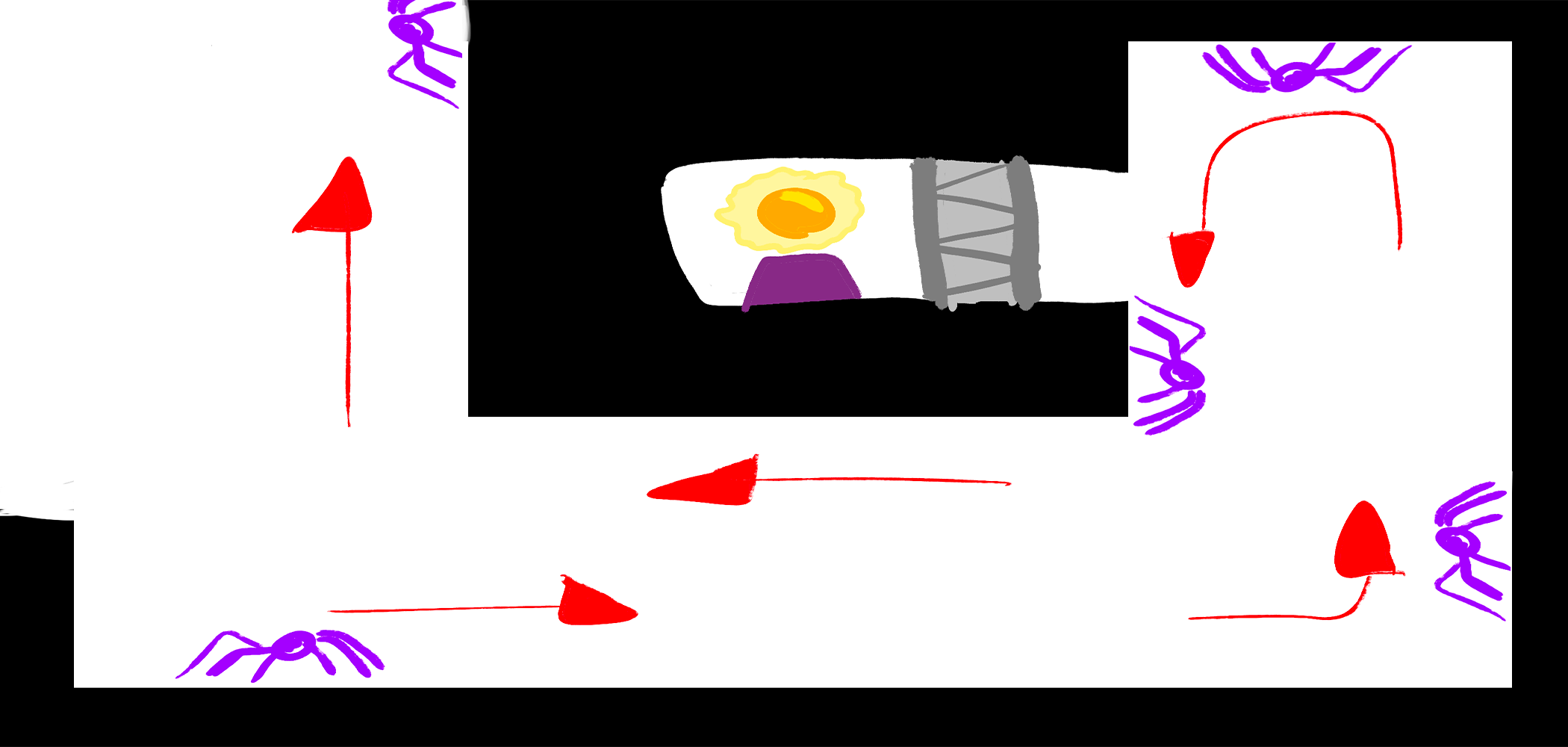
Wall-Crawling Combat
The main goal of this design is to explore how combat can feel when the player must integrate walls and ceilings as part of their decisions. This creates opportunities for unique combat situations and enhances exploration by allowing the player to traverse different paths and access new areas.
Additionally, the prototype aims to delve into how players could potentially react to this mechanic, with a strong focus on user experience (UX). Designing intuitive controls, clear visual cues, and responsive feedback will be crucial to ensuring a seamless and enjoyable gameplay experience that fully harnesses the potential of the wall-crawling combat mechanic.
Level Design
A key focus of the design is the importance of thoughtful level design. The wall-crawling mechanic presents exciting possibilities for creating intricate and challenging levels that take full advantage of the unique abilities of the spider. The levels will be carefully crafted to provide a balance between combat encounters, puzzle-solving, and exploration. Vertical levels, upside-down sections, and branching paths will offer players a sense of freedom and encourage creative thinking.
By designing levels that seamlessly integrate the wall-crawling mechanic into the environment, the prototype aims to deliver a captivating and immersive gameplay experience that keeps players engaged and eager to discover what lies ahead.
Exploration and Puzzle-solving
Another goal is to explore how the integration of wall-crawling mechanics in combat can enhance both exploration and puzzle-solving aspects of the game. Players will navigate through complex mazes, utilizing their wall-crawling abilities to uncover hidden areas and discover new paths. Furthermore, the prototype aims to incorporate Metroidvania elements, allowing the spider to acquire new abilities like ranged attacks, higher jumps, and wall-crawling upgrades.
These power-ups, inspired by real-life spider abilities, such as web-slinging or venomous attacks that can corrode platforms and open new paths, provide the player with new ways to overcome challenges, access previously inaccessible areas, and progress through the game.
Game Mechanics
- Wall-crawling: The player controls a spider that can walk on any wall or surface.
- Combat: The spider can attack enemies while crawling and platforming on walls or ceilings.
- Complex Level Design: The player can navigate through vertical and horizontally-oriented levels, where walls and ceilings become viable paths for progression.
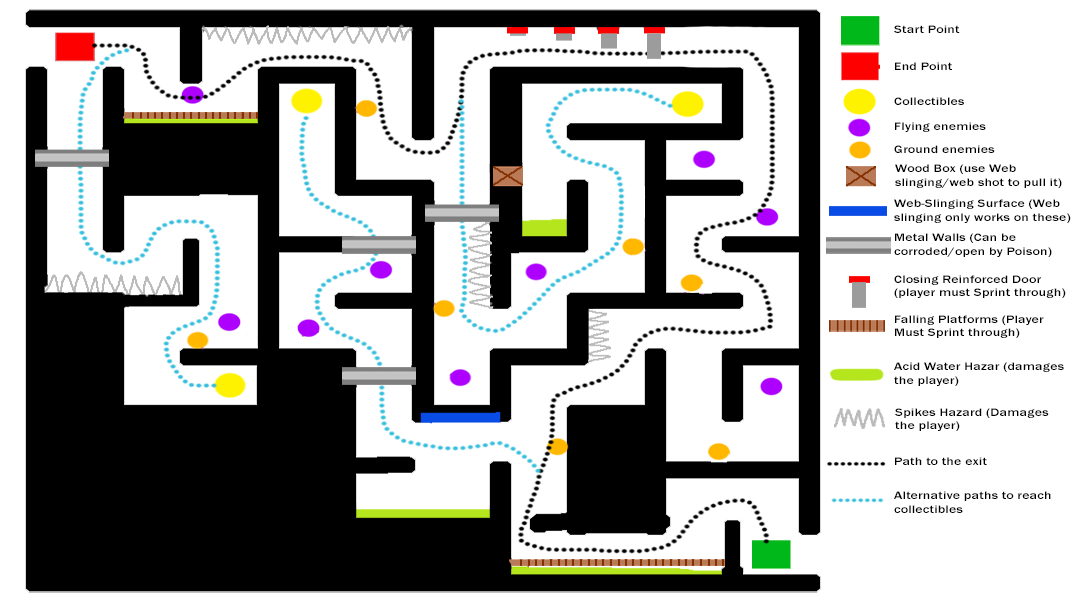
How would I expand on the wall crawling mechaninc to differentiate the game and deepen the complexity of the design
Web-slinging
In addition to wall-crawling, the spider could shoot webs to swing across gaps or reach higher platforms. This will add more complexity to the level design and allow for more exploration and traversal options for the player.
The web-swinging mechanic can be integrated into puzzles, requiring players to strategically use their webs to activate switches, move platforms, or manipulate the environment to progress, this would also mean there would need to be sections where the player cannot attach their webs, otherwise the mechanic would quickly trivialize and become repetitive.

Stealth
As spiders in the real world can camouflage themselves to blend in with their surroundings, incorporating a similar feature into the game can make the stealth gameplay more compelling. Enemies could have varying levels of perception, with some being more observant and others easily fooled by the spider’s camouflage ability.
This would create a sense of tension and challenge as players navigate through enemy-infested areas, constantly analyzing enemy behavior and searching for opportunities to strike without raising alarms.
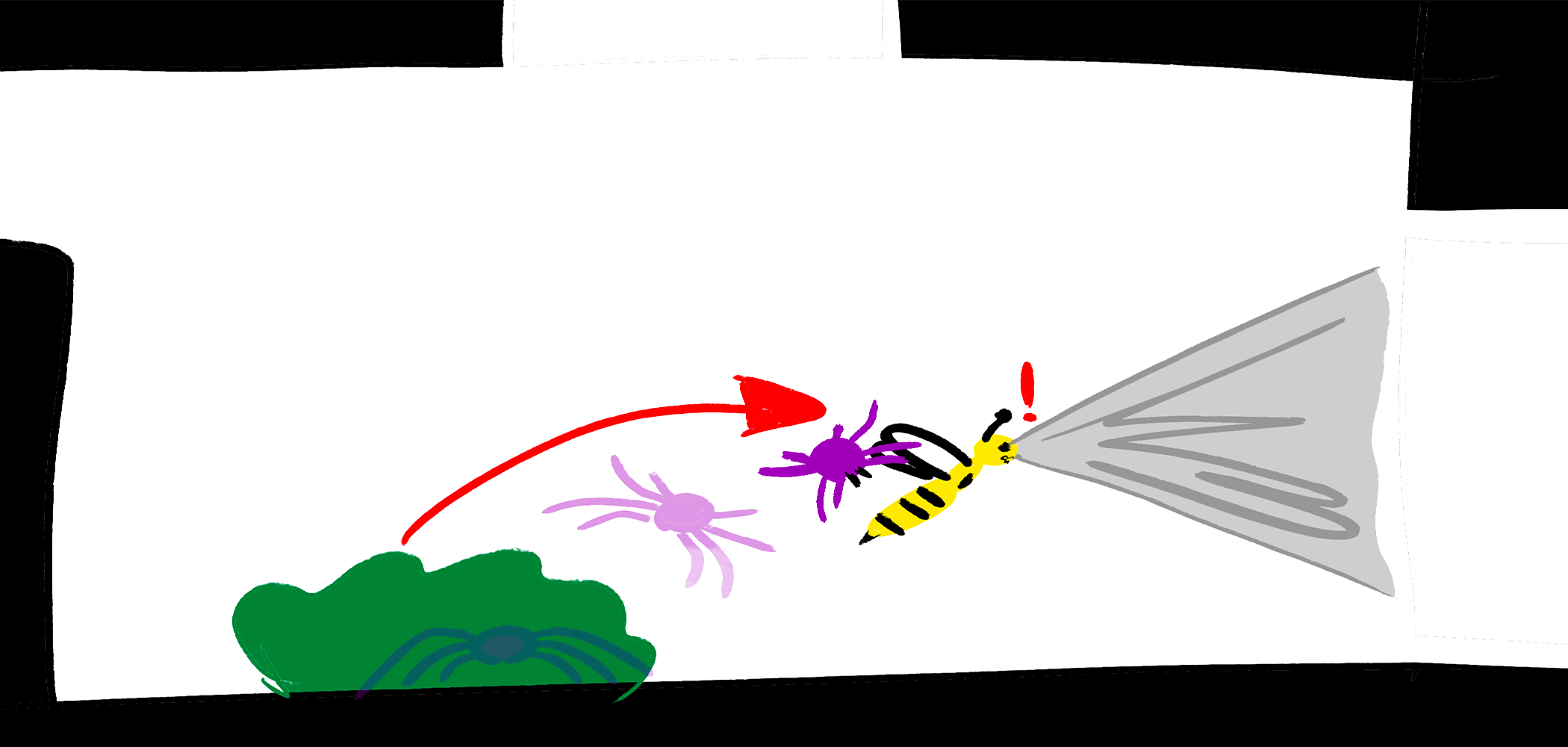
Poison Spit
The spider’s arsenal is further expanded with the ability to shoot venomous spits, which can be utilized for both offensive and environmental purposes. When engaging enemies, the spider can strategically poison them with venomous spits, inflicting damage over time or debilitating their movements.
Beyond combat, the venomous spits can be used to corrode certain obstacles or barriers, clearing the way for progression. By targeting specific objects or environmental elements, the spider can dissolve them, creating new paths or revealing hidden areas.
This adds an additional layer of puzzle-solving to the gameplay, as players need to identify which obstacles can be corroded and strategically utilize their venomous spits to overcome them.
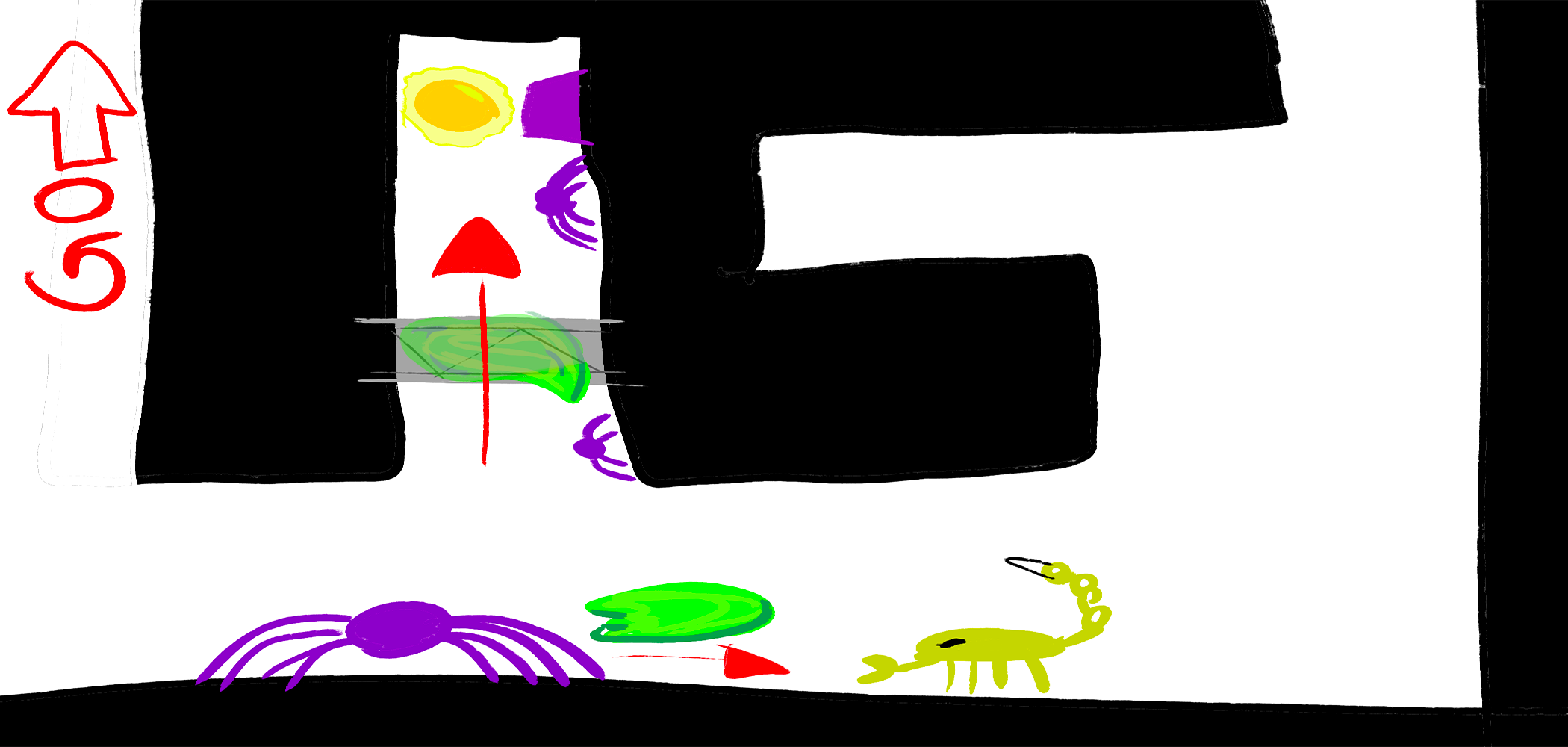
Web Shield
The shield adds a defensive element, allowing players to block and deflect enemy projectiles when timed correctly. The shield provides a reliable defense against ranged attacks but has limited durability, preventing players from indefinitely blocking everything. Unblockable attacks add challenge and encourage alternative strategies.
The web shield encourages different playstyles, allowing players to choose between defensive or offensive approaches. This dynamic and tactical combat experience enhances engagement and replayability, as players strategically assess the situation and adapt their strategies accordingly.
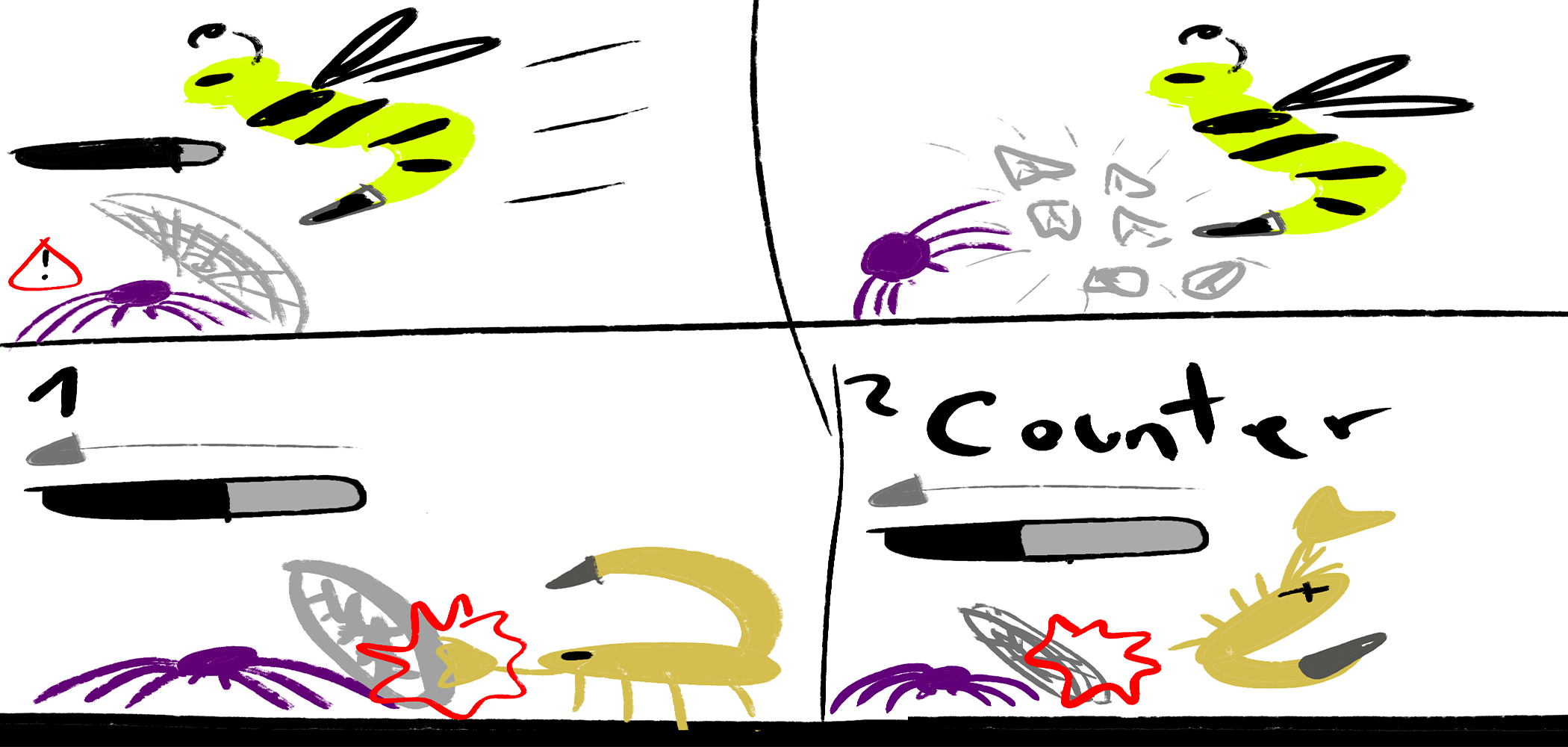
Rapid Movement/Sprint
Enables quick movement across walls, floors, and ceilings, allowing the player to evade enemies and reach destinations faster. Sprinting not only enhances traversal but also plays a vital role in puzzle-solving and exploration. Certain puzzles and areas within the game require the use of sprinting to navigate obstacles and access previously unreachable platforms.
It also opens up new possibilities for level design, with areas specifically designed for sprinting, creating a sense of momentum and enabling players to chain together dynamic movements.
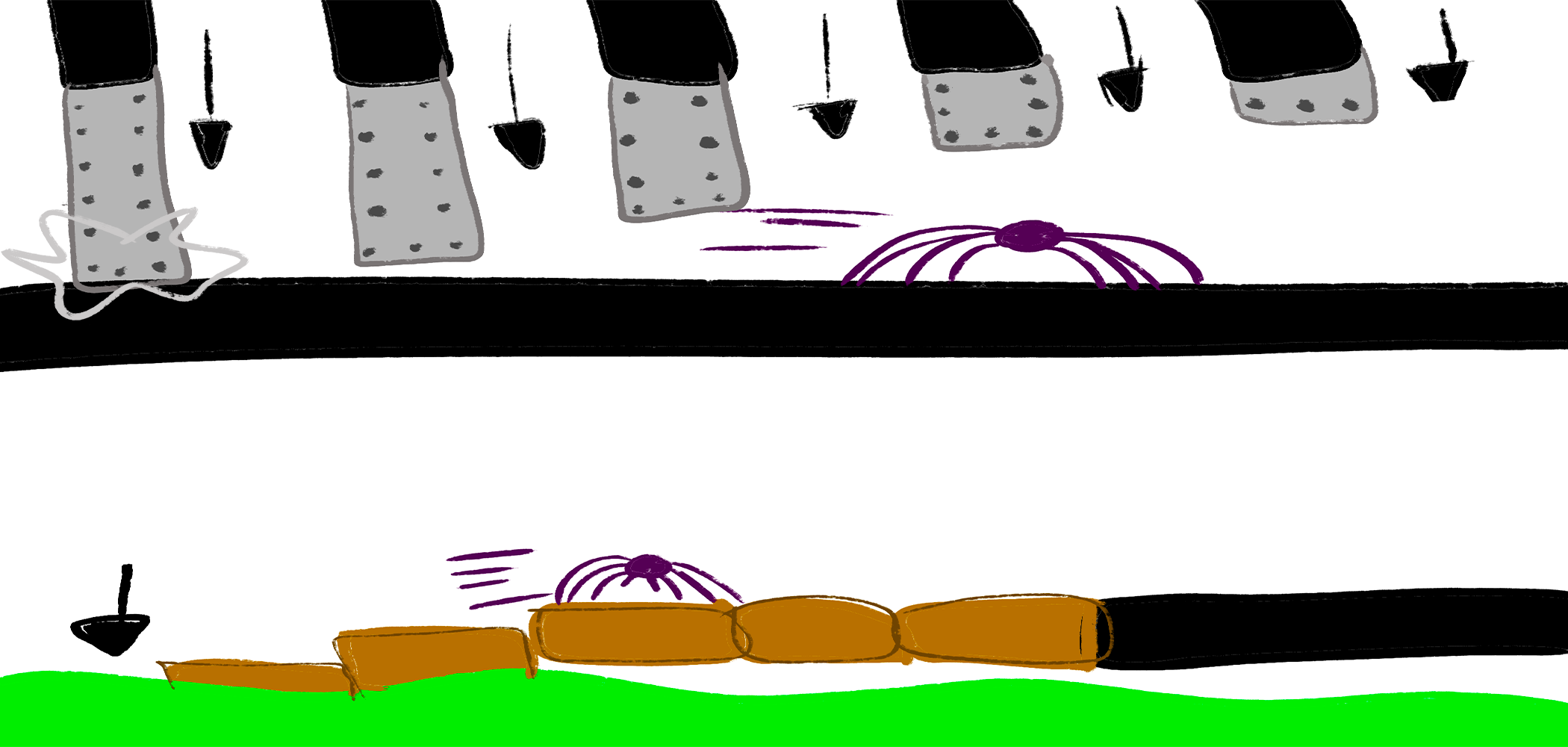
Bite Attack
The spider prototype features a close-range bite attack, allowing players to engage enemies directly and deal damage while also providing a healing opportunity. The bite attack is relatively slow, requiring players to carefully time their strikes and consider the risk versus reward.
Engaging in close-quarters combat with the bite attack adds a strategic element to the gameplay, as players must assess the situation and decide when it’s advantageous to initiate an attack. Thes dual-purpose nature of the bite attack adds depth to the combat system, requiring players to balance offense and defense while making tactical decisions.
The risk/reward dynamic of the bite attack contributes to the tension and excitement of combat encounters, enhancing the overall combat experience.
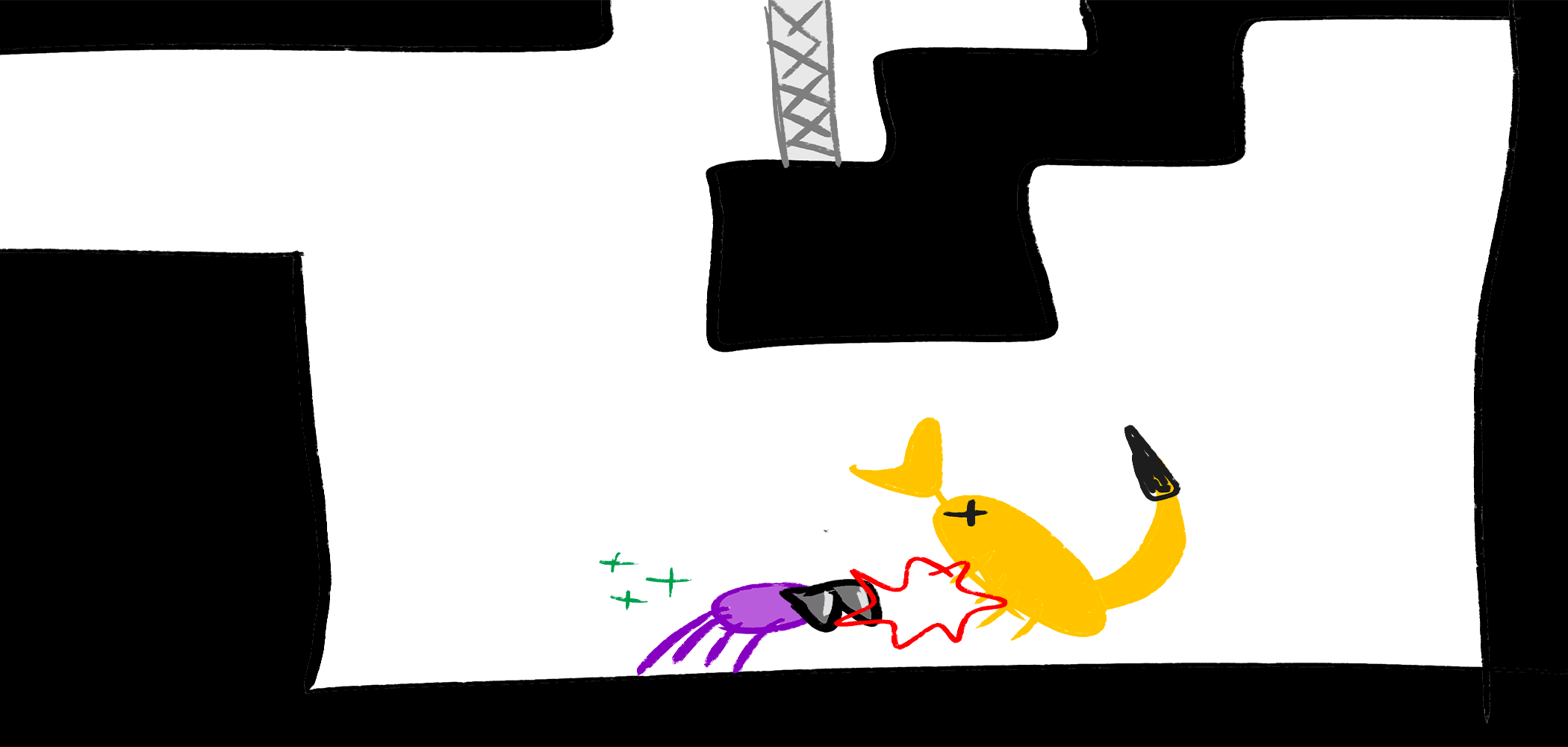
Skill Tree
incorporating a skill tree or upgrade system, enables players to customize their abilities and combat style. This system allows for a deeper level of personalization, as players can invest skill points or acquire upgrades to unlock new abilities and enhance existing ones. The skill tree offers different branches specializing in Combat, Stealth, or Movement upgrades, allowing players to focus on their preferred playstyle.
This choice-driven system empowers players to shape their spider character into a unique and formidable force, amplifying their effectiveness in combat and exploration. The skill tree enhances replayability, progression, and the overall gameplay experience by providing meaningful choices and the opportunity to specialize in a way that aligns with the player’s desired combat style and abilities.
